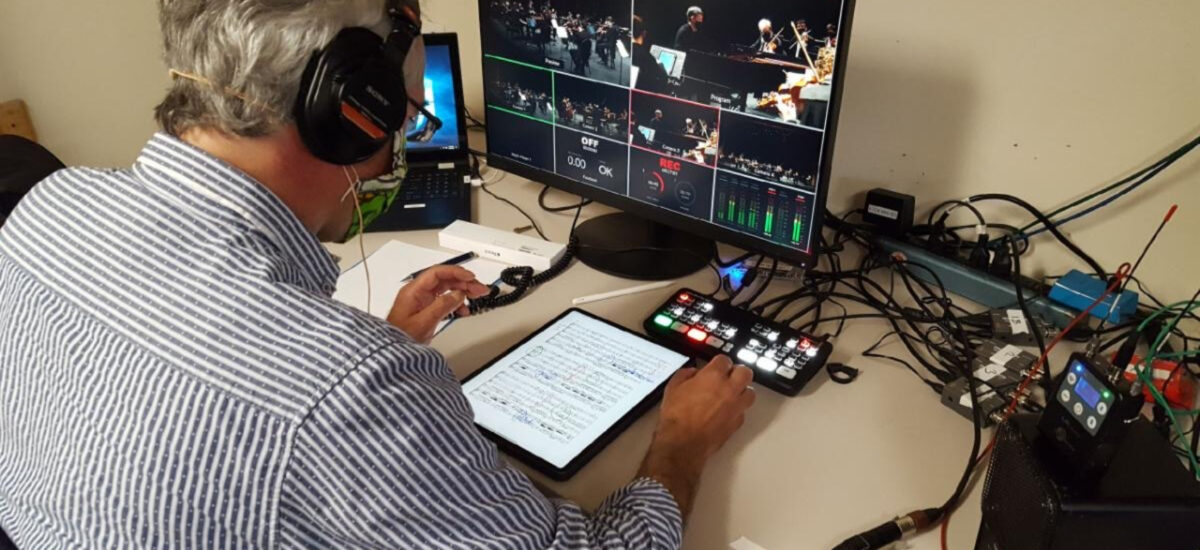Electronic Media Rights Clearances: Individuals (Union Members)
In This Section
For individuals who are members of a union (e.g. AFM, AGMA, IATSE ), the terms and conditions for that individual’s participation in an electronic media activity are usually specified in the basic local collective bargaining agreement (CBA) or a national union agreement.
The American Guild of Musical Artists
(AGMA) is a national union that represents singers (soloists and chorus) that are employed by some symphony orchestras. Those symphony orchestras with AGMA collective bargaining agreements (CBA) should contact either their AGMA Regional representative or the national office of AGMA in order to negotiate the terms and conditions for electronic media activities that are not already covered by the CBA. The national AGMA office has the authority to represent its union members in negotiating minimum terms for electronic media activities with each symphony orchestra. (There are no standard AGMA terms that apply to all symphony orchestras.)
The International Alliance of Theatrical Stage Employees
(IATSE) is the union that represents stagehands that are employed by some symphony orchestras. Although there is a national IATSE office, the terms and conditions governing the employment of electronic media activities are usually negotiated with the Local IATSE office.
The American Federation of Musicians
(AFM) represents the musicians (and librarians employed under the CBA) that are employed by some symphony orchestras. The terms and conditions governing their participation in an electronic media activity are specified either in the basic local collective bargaining agreement (CBA) or a national union agreement, or subject to local negotiation on a case-by-case basis. General guidelines for obtaining the rights of musicians for electronic media activities are covered in the AFM section.
AFM
The American Federation of Musicians (AFM) represents the musicians and (some) librarians that are employed by some symphony orchestras. The terms and conditions governing their participation in an electronic media activity are specified either in the basic local collective bargaining agreement (CBA) or a national union agreement, or subject to local negotiation on a case-by-case basis. In general, electronic media activities that take place within the geographical jurisdiction of the AFM Local are covered by the CBA or other local agreement. Distribution of electronic media content beyond those jurisdictional boundaries (which includes anything streamed on the Internet) is usually governed by a national collective bargaining agreement with the AFM.
The current AFM national agreements that apply to most symphony orchestra electronic media activities are:
- Integrated Media Agreement: Negotiated between the Symphony, Opera and Ballet Employers Electronic Media Association (EMA) and AFM for distribution of audio recordings from live performances and/or audio-visual recordings from live performances or special calls. To be eligible to use this agreement, an orchestra must join the EMA and employ musicians under the terms of a CBA with an AFM Local, and have a permanent roster of musicians and an Orchestra Committee.
- COVID-19 Side Letter:
Orchestras are rapidly considering how they can continue to serve their communities through streamed performances and digital learning events. An agreement has been reached between the EMA and the AFM, which will allow some orchestras whose communities are affected by the COVID-19 crisis to more easily offer audio or audio-visual streaming of certain performances to their audiences. - Sound Recording Labor Agreement: Negotiated by commercial record companies and the AFM for creation of audio recordings from studio sessions with some provisions for recordings created during live performances
- Limited Pressing Agreement: Provides for lower audio studio recording rates than the Sound Recording Labor Agreement, but limits distribution to 10,000 units (CDs or downloads). If distribution exceeds 10,000 units than payments step up to rates of the Sound Recording Labor Agreement.
Symphony orchestras interested in undertaking projects not covered by the above agreements (e.g., motion picture soundtracks, commercial announcements, videogames, etc.) will have to use the appropriate commercial AFM agreement.
Please contact League electronic media consultants Michael Bronson and Joe Kluger to be sure that you understand which of these agreements apply to your project and to obtain advice on how to use and interpret them.
Banner: A New Bedford Symphony Orchestra virtual concert, recorded on stage at the Zeiterion Performing Arts Center. Masked string and percussion musicians, performing on stage, are shown on the sound engineer’s computer. Photo by Dave Prentiss

